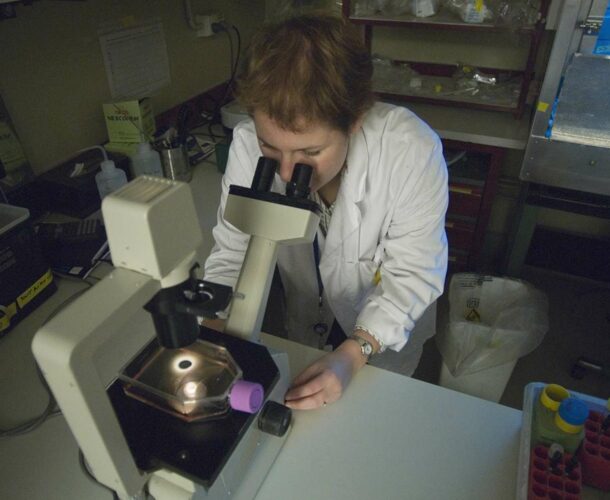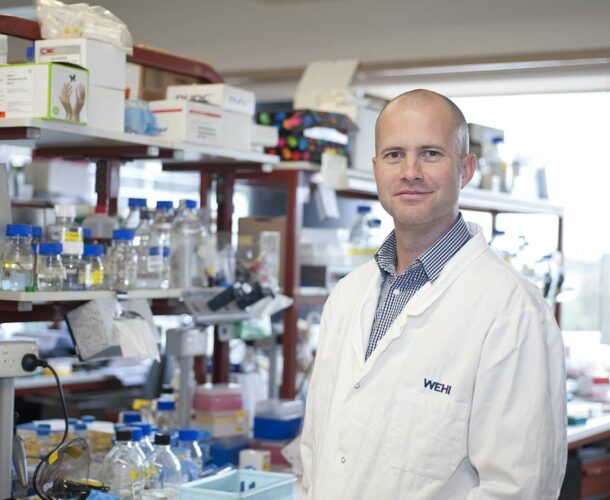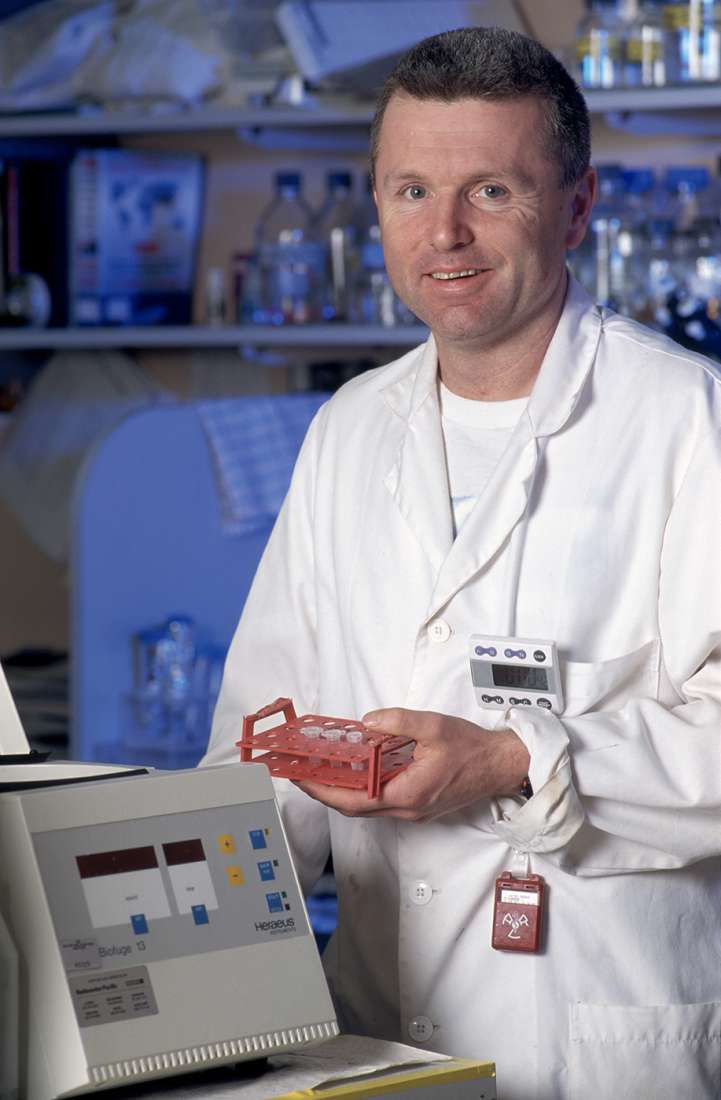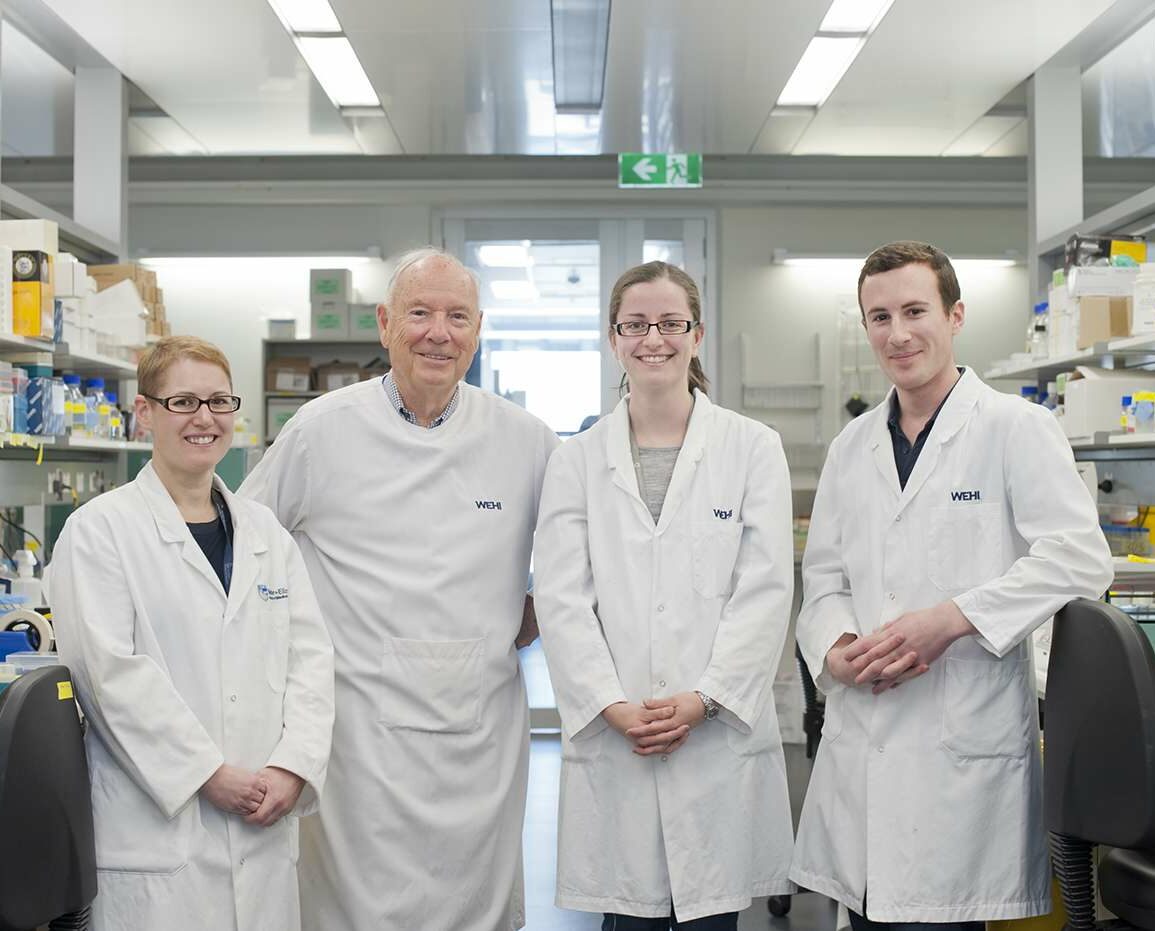Platelets are the tiny cells that control blood clotting. The numbers of platelets in the blood must be tightly controlled – too few platelets mean that blood can’t clot, putting a person at risk of excessive bleeding; too many platelets can trigger the dangerous clots that cause stroke and heart attacks.
Professor Benjamin Kile has devoted his research to how platelet numbers are controlled, with the goal of being able to restore normal platelet levels in people whose platelets have been depleted.
The molecular clock
The number of platelets in the blood at any time is influenced by how many platelets are produced, and how long those platelets stay in the blood before they die or are used up.
A collaboration between Kile, Dr Kylie Mason and Professor David Huang explains how the longevity of platelets is controlled. This involves two proteins called BAK and BCL-xL. These proteins are no strangers to our researchers – they are part of a family of proteins regulating cell death that includes BCL-2 and BIM, about which our researchers have already made enormous contributions to understanding.
The research team discovered that, from the moment they are formed, platelets are programmed to die.
“Platelets don’t just wear out,” Kile says. “We showed that there is a molecular clock counting down. And now we’ve shown that we can slow it down or speed it up.”
What could this mean for our health?
This discovery is the first step in understanding how platelet levels might one day be restored to normal as a treatment for clotting disorders.
It also opens up the possibility of prolonging platelet lifespan in donated blood, extending the use-by date of donated platelets.







